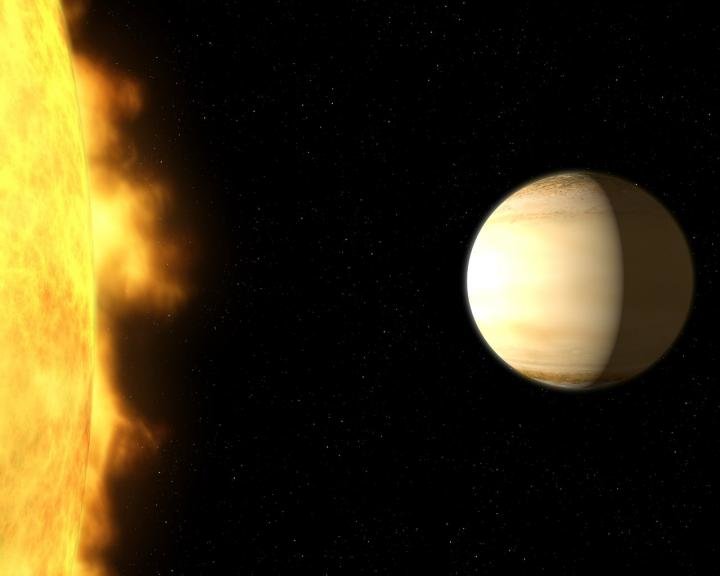Hubble Examines Exoplanet Atmosphere with Unprecedented Detail
A team of international scientists has utilized the NASA/ESA Hubble Space Telescope to examine the atmosphere of the hot exoplanet WASP-39b. By combining recent data with older information, they have conducted the most comprehensive study to date on an exoplanet’s atmosphere. The composition of WASP-39b’s atmosphere suggests that the formation processes of exoplanets can differ significantly from those of the giants in our own Solar System.Studying the atmospheres of exoplanets can offer valuable insights into the formation and distribution of planets around stars. Lead investigator Hannah Wakeford from the University of Exeter in the UK and the Space Telescope Science Institute in the USA explains, “To comprehend our own Solar System better, we must explore beyond its boundaries.”
To conduct a detailed analysis of the exoplanet WASP-39b, the British-American team combined the capabilities of the NASA/ESA Hubble Space Telescope with other ground- and space-based telescopes. With present-day technology, they have achieved the most comprehensive spectrum of an exoplanet’s atmosphere.WASP-39b orbits a star similar to our Sun, located approximately 700 light-years away from Earth. This exoplanet is categorized as a “Hot-Saturn” due to its comparable mass to Saturn in our Solar System and its close proximity to its parent star. The study revealed significant differences between the two planets, despite their similar masses. WASP-39b lacks a ring system and possesses a voluminous atmosphere devoid of high-altitude clouds. This unique characteristic enabled Hubble to delve deep into its atmospheric layers.

The team discovered clear evidence of atmospheric water vapor by analyzing starlight that passed through the planet’s atmosphere. Surprisingly, WASP-39b contains three times more water than Saturn. This unexpected finding, along with the abundance of water, suggests the presence of a significant amount of heavier elements in the atmosphere. This indicates that the planet experienced a bombardment of icy material, which accumulated in its atmosphere. Such bombardment would only be possible if WASP-39b formed much farther away from its host star than its current position.Co-author David Sing from the University of Exeter, UK, states, “WASP-39b demonstrates that exoplanets can possess different compositions than those in our Solar System, revealing the surprises they hold.”
The analysis of the planet’s atmospheric composition and its current location suggest that WASP-39b likely underwent an intriguing inward migration, embarking on an epic journey across its planetary system. “Exoplanets are teaching us that the process of planet formation is more complex and perplexing than we previously believed. And that is truly remarkable!” adds Wakeford.After its remarkable inward journey, WASP-39b now orbits its parent star, WASP-39, at a distance eight times closer than Mercury is to the Sun. It completes one orbit in just four days. The planet is also tidally locked, meaning it always presents the same side to its star. Wakeford and her team measured the temperature of WASP-39b to be a scorching 750 degrees Celsius. Despite only one side facing the star, powerful winds distribute heat from the illuminated side, maintaining the dark side at a similar high temperature.
David Sing explains that the diversity of exoplanets we observe holds the potential to unravel the various mechanisms involved in the formation and evolution of planets. In anticipation of this, the team plans to utilize the NASA/ESA/CSA James Webb Space Telescope, set to be launched in 2019, to obtain a more comprehensive understanding of the atmosphere of WASP-39b. Unlike the Hubble telescope, James Webb will enable the collection of data on the planet’s atmospheric carbon, which absorbs light of longer wavelengths. This additional information will allow us to further investigate the origins and processes involved in the creation of this planet by analyzing the quantities of carbon and oxygen present in its atmosphere.
This article is republished from PhysORG under a Creative Commons license. Read the original article.
Do not forget to share your opinion with us to provide you with the best posts !



0 Comments